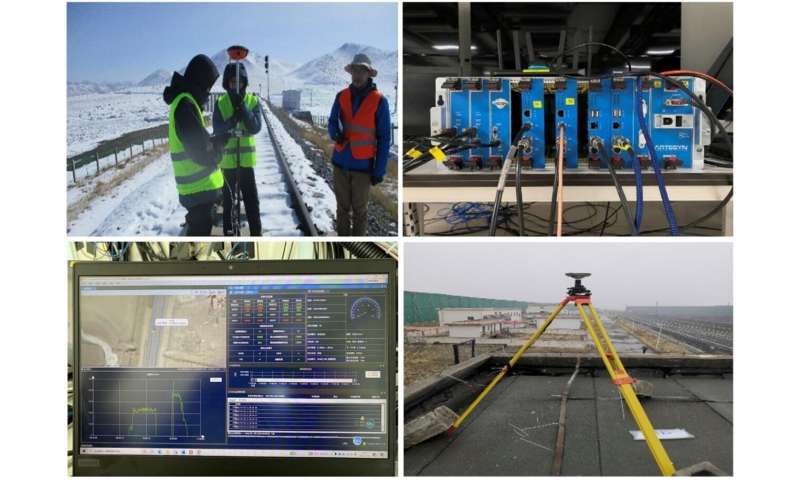Advancing intelligent railway systems: GNSS-based applications and field demonstration validation

Considering the applications of Global Navigation Satellite System (GNSS) in intelligent railway systems, the key technologies for applying GNSS in novel train-centric railway signaling systems are investigated, including the multi-sensor data fusion, Virtual Balise (VB) capturing and messaging, train integrity monitoring, and system performance evaluation.
The train control system plays a vital role in ensuring the safety of railway operations and enhancing transportation efficiency. Chinese Train Control Systems (CTCSs), including CTCS Level 2 and Level 3, have been widely implemented in high-speed railways. However, the current use of Balises for correcting the accumulative position error through the wheel speed sensor requires a large number of track-side equipment, making maintenance operations costly and inefficient. This has raised concerns about achieving the desired cost efficiency.
To address these challenges, various countries have been researching advanced train state perception and operation control systems with a train-centric design. The primary focus is on improving transportation efficiency by reducing track-side equipment, construction costs, and maintenance burdens. The ultimate goal is to create a more streamlined and cost-effective railway operation that maintains a high level of safety.
To that end, a team of researchers in China investigated the key technologies required for applying global navigation satellite system (GNSS) in innovative train-centric railway signaling systems.
Lead author of the study, Baigen Cai, from Beijing Jiaotong University, explains, "Our investigations encompass multi-sensor data fusion, virtual balise (VB) capturing and messaging, train integrity monitoring, and system performance evaluation. By developing a novel train control system with dynamic configuration of the trains' interval, reduced reliance on track-side equipment, and improved maintainability of the on-board train location determination system, we aim to effectively utilize and capitalize on the advantages of the train-centric mode for specific railway lines."
Through the study, published in the KeAi journal High-speed Railway, the team hope that railway operations will be enhanced.
"With the ongoing development of the global BeiDou Navigation Satellite System, we anticipate a wide array of GNSS-based applications will be promoted in intelligent railway systems in the future. This advancement holds great potential for enhancing the efficiency, safety, and overall performance of railway operations through the integration of cutting-edge positioning and navigation technologies," says Cai.
More information:
Baigen Cai et al, Study on key technologies of GNSS-based train state perception for train-centric railway signaling, High-speed Railway (2022). DOI: 10.1016/j.hspr.2022.12.003
Provided by KeAi Communications Co.